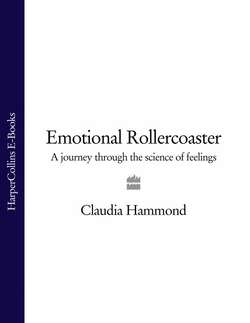Читать книгу Emotional Rollercoaster: A Journey Through the Science of Feelings - Claudia Hammond - Страница 11
an experiment
ОглавлениеTry this. Stand up and then move your body as though you are laughing uncontrollably. Bend forward, clutching your sides, with your shoulders shaking. You could even introduce the occasional knee-slap. Now try to remember exactly what this feels like physically within your body. Then stand up straight again and imagine that you’re doubled up with laughter, but this time don’t move, just think of those movements. Don’t think of a funny occasion or a joke. Simply imagine that your body is experiencing uncontrollable laughter and then see how you feel.
This exercise isn’t easy, but Nakia Gordon from Michigan State University succeeded in training people to do just this. After three one-hour training sessions, along with plenty of practice at home, most of the volunteers in her studies were able to lie absolutely still in a brain scanner while imagining either laughing, crying or walking. Each movement resulted in a different pattern of brain activation. This experiment shows that emotions can be linked to bodily movements, something William James had thought so long ago. Moreover the people taking part felt happier after imagining laughter, and sadder after imagining crying, even though they were instructed only to imagine the movements, not the feeling of those emotions. This opens up the possibility that it’s not just that smiling can make you feel better, just thinking about smiling or laughing might do the same trick.
